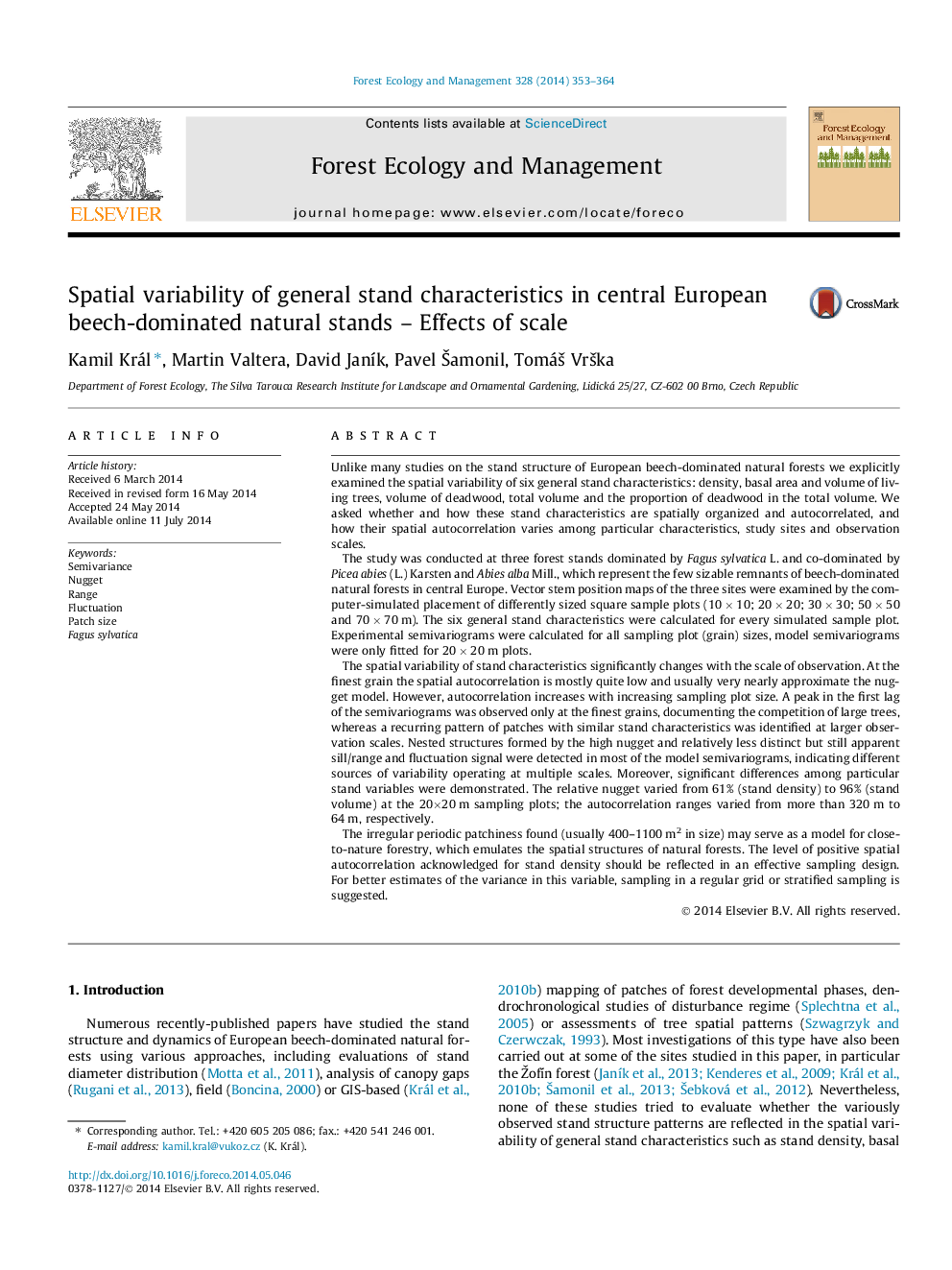| کد مقاله | کد نشریه | سال انتشار | مقاله انگلیسی | نسخه تمام متن |
|---|---|---|---|---|
| 86535 | 159194 | 2014 | 12 صفحه PDF | دانلود رایگان |
• We analyzed spatial autocorrelation of six stand characteristics at multiple scales.
• The results were scale dependent, with close to random pattern at the finest scale.
• The autocorrelation increased with increasing sampling plot size.
• Semivariograms were composed by the high nugget, sill/range and fluctuation signal.
• Significant differences among particular stand variables were demonstrated.
Unlike many studies on the stand structure of European beech-dominated natural forests we explicitly examined the spatial variability of six general stand characteristics: density, basal area and volume of living trees, volume of deadwood, total volume and the proportion of deadwood in the total volume. We asked whether and how these stand characteristics are spatially organized and autocorrelated, and how their spatial autocorrelation varies among particular characteristics, study sites and observation scales.The study was conducted at three forest stands dominated by Fagus sylvatica L. and co-dominated by Picea abies (L.) Karsten and Abies alba Mill., which represent the few sizable remnants of beech-dominated natural forests in central Europe. Vector stem position maps of the three sites were examined by the computer-simulated placement of differently sized square sample plots (10 × 10; 20 × 20; 30 × 30; 50 × 50 and 70 × 70 m). The six general stand characteristics were calculated for every simulated sample plot. Experimental semivariograms were calculated for all sampling plot (grain) sizes, model semivariograms were only fitted for 20 × 20 m plots.The spatial variability of stand characteristics significantly changes with the scale of observation. At the finest grain the spatial autocorrelation is mostly quite low and usually very nearly approximate the nugget model. However, autocorrelation increases with increasing sampling plot size. A peak in the first lag of the semivariograms was observed only at the finest grains, documenting the competition of large trees, whereas a recurring pattern of patches with similar stand characteristics was identified at larger observation scales. Nested structures formed by the high nugget and relatively less distinct but still apparent sill/range and fluctuation signal were detected in most of the model semivariograms, indicating different sources of variability operating at multiple scales. Moreover, significant differences among particular stand variables were demonstrated. The relative nugget varied from 61% (stand density) to 96% (stand volume) at the 20×20 m sampling plots; the autocorrelation ranges varied from more than 320 m to 64 m, respectively.The irregular periodic patchiness found (usually 400–1100 m2 in size) may serve as a model for close-to-nature forestry, which emulates the spatial structures of natural forests. The level of positive spatial autocorrelation acknowledged for stand density should be reflected in an effective sampling design. For better estimates of the variance in this variable, sampling in a regular grid or stratified sampling is suggested.
Journal: Forest Ecology and Management - Volume 328, 15 September 2014, Pages 353–364
